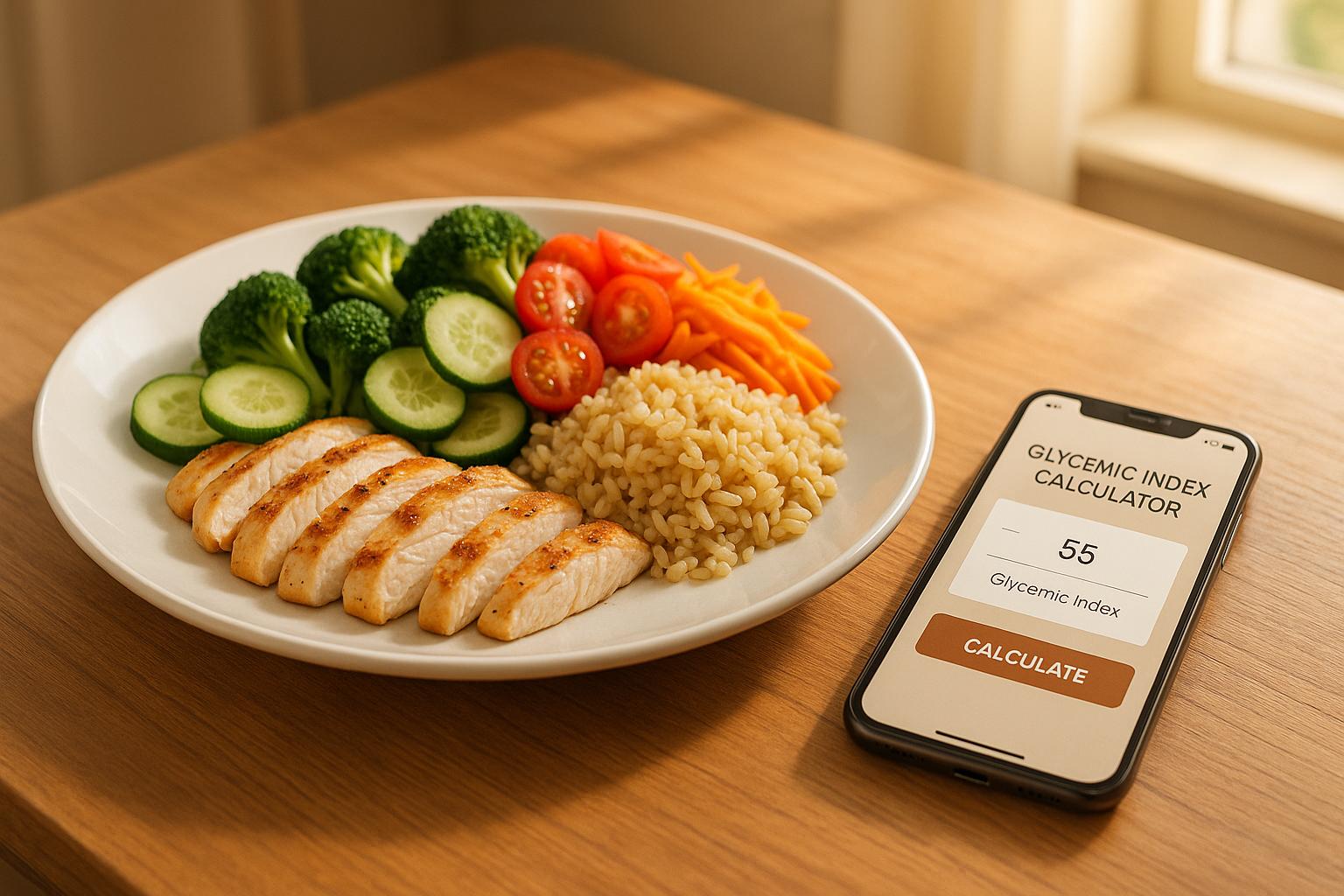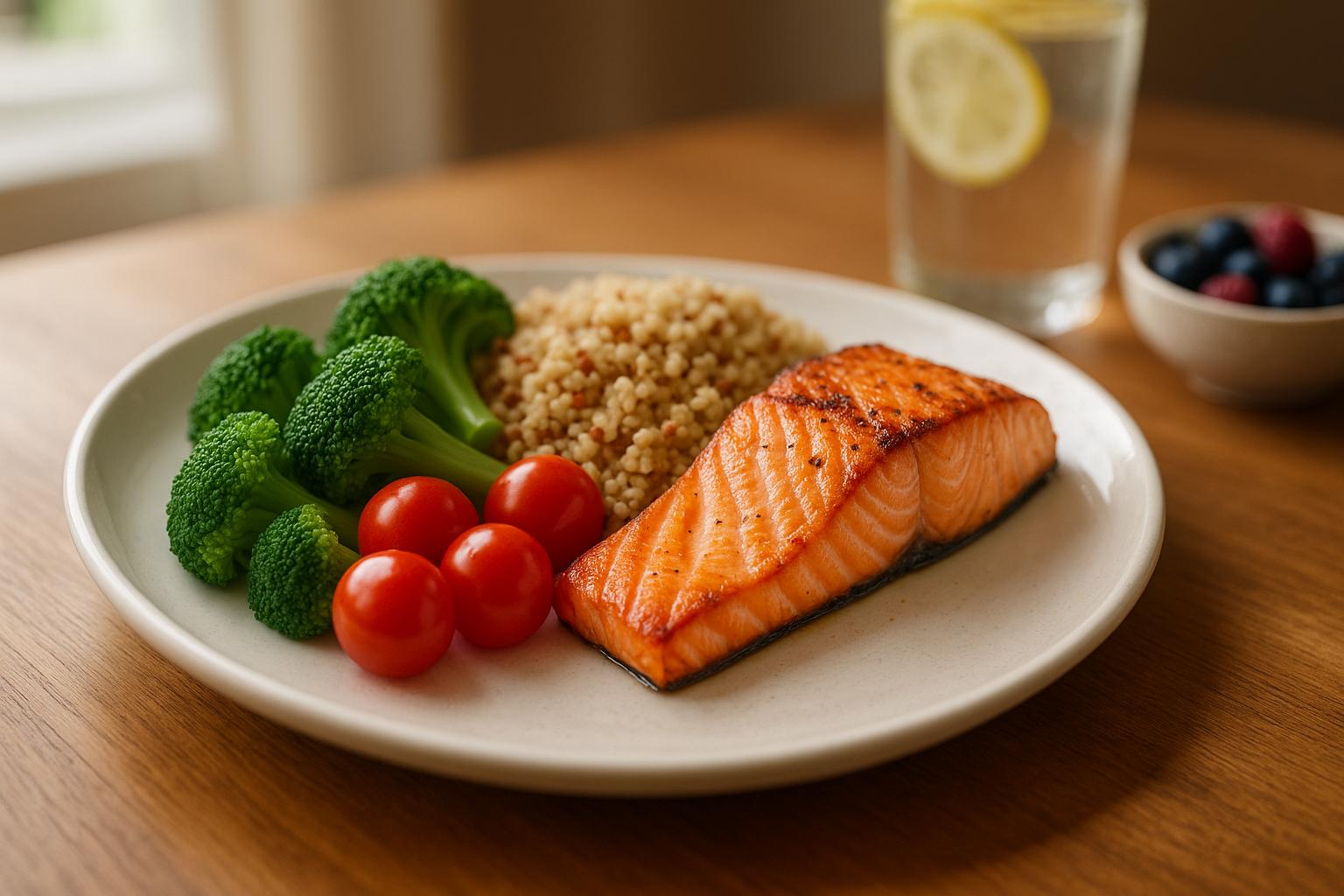When it comes to managing blood sugar levels and reducing cravings, understanding how carbohydrate-containing foods affect your body can provide significant benefits. You’ve likely heard about terms like glycemic index (GI), glycemic load (GL), and glycemic response (GR) being used in discussions about diet and nutrition. But what do they actually mean? More importantly, how can they guide you toward better dietary choices?
This article unpacks these concepts, highlighting the differences between them, their limitations, and how you can identify what works best for your unique body. By the end, you’ll see why your personal glycemic response is the key to creating a sustainable and effective approach to managing your blood sugar.
What Is Glycemic Index?
The glycemic index (GI) is a system used to rank carbohydrate-rich foods based on how they affect blood sugar levels within two hours of consumption. It’s scored on a scale from 0 to 100, where pure glucose (a simple sugar) is the benchmark at 100. Foods are categorized as follows:
- Low GI: 1-55
- Medium GI: 56-69
- High GI: 70+
The Issue With GI
While GI provides insight into the potential blood sugar rise from consuming a specific food, it’s based on standardized laboratory conditions. Real-life variables - like the food’s ripeness, preparation, and how it’s consumed in a meal - can significantly alter its impact. For example:
- Cooking and cooling: Cooked and cooled potatoes or rice contain more resistant starch, which lowers their glycemic effect.
- Ripeness: A ripe banana spikes blood sugar more than a green banana.
- Food combinations: Eating carbohydrates with protein or fat reduces GI effects.
Because GI measures a food in isolation, it doesn’t reflect how most people eat in the real world - where meals are mixed and influenced by individual factors such as stress levels, gut health, and activity.
Glycemic Load and Why It’s More Useful
The glycemic load (GL) builds on GI by factoring in portion size. It’s calculated as:
GL = GI × carbohydrate content (grams) ÷ 100
This formula incorporates the quantity of carbohydrates consumed, offering a more realistic measure of a food’s blood sugar impact. For example:
- Watermelon has a high GI but a low GL because it’s mostly water, and you’d need to eat a large amount to reach 50 grams of carbohydrates (the standard measure for GI calculations).
- A slice of white bread, on the other hand, has both a high GI and a significant GL, making it more likely to spike blood sugar quickly.
GL categories are broken down as follows:
- Low GL: ≤10
- Medium GL: 11-19
- High GL: ≥20
Why Glycemic Response Is the Real Game-Changer
While GI and GL provide helpful guidelines, they don’t account for the personal variability in how individuals process carbohydrates. This is where glycemic response (GR) comes in, referring to how your unique physiology responds to a specific food or meal. Several factors can influence GR:
- Baseline insulin sensitivity: How efficiently your body processes glucose.
- Physical activity: Exercise can improve how your body handles carbohydrates.
- Time of day: Your body’s glucose tolerance varies throughout the day.
- Gut health: Your microbiome composition affects digestion and carbohydrate metabolism.
- Context of the meal: Mixing carbs with fat, protein, or fiber slows glucose absorption.
Research on Individual Differences
A 2015 study by researchers in Israel demonstrated the variability of GR among individuals. Using continuous glucose monitors (CGMs), they found that some people experienced sharp blood sugar spikes after eating bananas, while others showed minimal changes. The same variability applied to cookies and ice cream. The takeaway? No single food affects everyone the same way, even if the GI or GL suggests otherwise.
Practical Tips for Managing Blood Sugar
To effectively manage your blood sugar and reduce cravings, focus on personalized experimentation rather than generic guidelines. Here’s how to get started:
1. Embrace Self-Monitoring
Use tools like a glucometer (finger prick test) or a CGM to track how specific foods affect your blood sugar. Pay attention to how different portion sizes, cooking methods, and meal combinations impact your levels.
2. Test Common Foods
Experiment with staple foods in your diet. For example:
- Rice: Compare basmati (lower GI) to jasmine rice (higher GI). See how cooking and cooling either type changes your response.
- Oats: Try steel-cut oats versus instant oats; the larger, less-processed particles in steel-cut oats typically cause slower blood sugar rises.
- Potatoes: Eat them hot versus cooked and cooled. The latter increases resistant starch and slows glucose absorption.
3. Consider Meal Context
Include protein, fat, fiber, or acidic foods (like vinegar or lemon juice) with your meals to slow digestion and reduce blood sugar spikes. For example:
- Pair whole-grain bread with avocado and eggs.
- Add a small amount of olive oil and vinegar to starchy foods like pasta or rice.
4. Focus on Satiety and Energy
Blood sugar management isn’t about eliminating carbs or avoiding all spikes. Instead, aim for stable energy and reduced cravings by choosing foods that keep you satisfied longer. For instance, sourdough bread (due to fermentation) might keep you full and energized compared to highly processed white bread.
Key Takeaways
- Glycemic Index (GI) measures how quickly a food raises blood sugar in a lab setting but lacks real-world context.
- Glycemic Load (GL) factors in portion size, providing a more accurate reflection of a food’s blood sugar impact.
- Glycemic Response (GR) is the most valuable metric because it’s highly individual and accounts for personal physiology, meal combinations, and lifestyle factors.
- Cooking, cooling, ripeness, and food pairings can dramatically alter how a carbohydrate-rich food affects blood sugar.
- Experiment with your diet using tools like glucometers or CGMs to discover what works for you rather than relying solely on GI/GL tables.
- Focus on mixed meals with protein, fat, and fiber to stabilize blood sugar and improve satiety.
- Not all high-GI foods are harmful (e.g., watermelon), and not all low-GI foods are inherently healthy (e.g., ice cream).
Conclusion
While the glycemic index and glycemic load can serve as helpful starting points, they shouldn’t be your only guide. Instead, prioritize understanding your body's unique glycemic response through self-experimentation. This personalized approach will enable you to make informed dietary choices that stabilize your blood sugar, boost energy, and reduce cravings - all crucial steps toward better overall health.
Remember, nutrition science isn’t about rigid rules; it’s about finding practical, sustainable strategies that work for you. By combining self-awareness, real-world experimentation, and evidence-based insights, you can take control of your diet and well-being in meaningful ways.
Source: "Mini Mikkipedia - Glycemic Index vs Glycemic Response: What Really Matters" - Mikki Williden, PhD, YouTube, Aug 24, 2025 - https://www.youtube.com/watch?v=-dLfE5TFzo8
Use: Embedded for reference. Brief quotes used for commentary/review.


